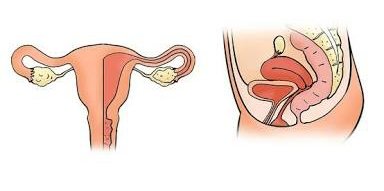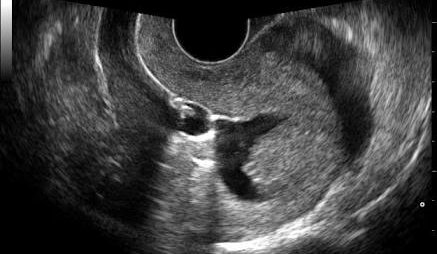The issues of Perimenopausal and Menopausal bleeding in women and its management
Good day steemians and welcome to my blog
Today, i will be writing on what has always bothered me since childhood (smiles), don't get me wrong, i might not be able to explain why i'm bothered, maybe while you're reading through, you will understand the feelings. For my male readers and colleagues that do not know much about the subject matter, let me briefly explain what menopause and the associated terms means.
Menopause is defined as the absence of menstrual periods for 1 year. The average age is 50 years, but the normal range is 45 to 55 years. The years leading up to this stage are called 'perimenopause'. This term means "around menopause". This stage in a woman can last up to 10 years.
During the Perimenopause stage, shifts in hormone levels can affect ovulation and cause changes in the menstrual cycle especially abnormal bleeding source
HOW TO TELL IF BLEEDING IS ABNORMAL
Any bleeding after menopause is abnormal and should be reported to a health care provider. During perimenopause, changes in menstrual bleeding are common. During a normal menstrual cycle, the levels of the hormones oestrogen and progesterone increase and decrease in a regular pattern.
Ovulation occurs in the middle of the cycle and menstruation occurs about two weeks later. During menopause, hormone levels may not follow this regular pattern, as a consequence of this there may be irregular bleeding or spotting. Now, get this, in some months, the periods may increase or decrease and the person may begin to skip periods.

Public domain: Wikipedia common
Although these changes are normal in perimenopause. Abnormal bleeding sometimes can indicate a problem not related to perimenopause. A good rule to follow is to let the health care provider know if any of the following changes are noticed during the monthly cycle:-
- very heavy bleeding
- Bleeding that lasts longer than normal
- Bleeding that occurs more often than every three weeks
- Bleeding that occurs after sex or between periods
CAUSES OF ABNORMAL BLEEDING
If there is any bleeding after menopause or there is any of the abnormal changes in the monthly cycle listed previously, it is important to see the health care provider to find out the cause. Many things can cause abnormal bleeding but some are more serious than others.
1. Polyps
These usually are non-cancerous growths that develop from tissue similar to the endometrium, the tissue that lines the inside of the uterus. They either attach to the uterine wall or develop on the endometrial surface source. They may cause irregular or heavy bleeding. Polyps can also grow on the cervix or the cervical canal. These polyps may cause bleeding after sexual intercourse.
2. Thinning Of The Endometrium
After menopause, the endometrium may become too thin as a result of low oestrogen levels. This condition is called endometrial atrophy. As the lining thins. the person may experience abnormal bleeding.
3. Endometrial Hyperplasia
In this condition, the lining of the uterus thickens. Endometrial Hyperplasia can cause irregular or abnormal bleeding. In some cases, the cells of the lining are the ones that become abnormal.
This condition called "Atypical Hyperplasia" if left unchecked or untreated can lead to cancer of the uterus source.
.jpeg)
Public domain: wikipedia commons
Endometrial Hyperplasia is often caused by the presence of excess estrogen without enough progesterone. source. Diagnosis and treatment of Endometrial Hyperplasia ensures the prevention of common forms of endometrial cancers.
4. Endometrial Cancer
In some European and American countries, Endometrial cancer is the most common type of cancer of the female reproductive system. I will list briefly some risk factors for Endometrial cancer;
- Advancing age of the woman
- Starting menstruation at an earlier age or entering menopause at an older age
- Having an history of never being pregnant
- Irregular Menstrual periods
- History of infertility
- Prolonged use of medications containing high doses of oestrogen
- Obesity
- Polycystic Ovary Syndrome(PCOS)
- Certain ovarian tumors
- Medical history of diabetes, high blood pressure, gall bladder disease and thyroid disease
- Personal or family history of ovarian or colon cancer
- Hormone therapy
- Infection of the uterus or cervix
- Smoking
I would also like to state that Endometrial cancer could also occur in the absence of these risk factors and the presence of these risk factors is not conclusive of the fact that the person is going to have Endometrial cancer. Bleeding abormally is the most common indication of Endometrial cancer in women after menopause, wen diagnosed early, most cases can be treated successfully.
DIAGNOSIS
In order to diagnose the cause of abnormal Perimenopausal bleeding after menopause, the health care provider will certainly review the personal and medical history of the patient and physical examination will also be carried out. One or more of the following tests could be carried out;
i. Endometrial Biopsy
With the use of a thin tube, a small amount of tissue is taken from the lining of the uterus. The sample is sent to the laboratory and it is observed under the microscope(Histology)
ii. Transvaginal Ultrasound
A device is placed in the vagina and with the use of sound waves a picture of the pelvic organs is created.
iii. Sonohystergraphy
Fluid is injected into the uterus through a catheter while ultrasound images are made of the uterus.
Public domain: wikipedia commons
iv. Hysteroscopy
A thin lighted tube with a small camera at the end called a ' hysteroscope' is inserted through the vagina and the opening of the cervix. This allows the inside of the uterus to be seen and observed. Some of this test can be carried out in the office of the health care provider and others may be done at the surgical centre.
TREATMENT
Treatment of abnormal Perimenopausal bleeding or Bleeding after menopause depends on it's cause. If there are growths (such as Polyps) that are causing the bleeding, there may be need for surgery to remove them. Endometrial Atrophy can be treated with medication. Endometrial Hyperplasia can be treated with progestin therapy which causes the endometrium to shed using hysteroscopy or Dilation and Curettage(D&C).
Cases of Endometrial Hyperplasia are at increased risk for Endometrial cancer. They need regular endometrial biopsy to ensure that Hyperplasia once treated does not re-occur. Endometrial Cancer is treated with surgery (usually hysterectomy with removal of lymph nodes) in most cases.
Conclusion
change in bleeding patterns during Perimenopause are normal, but they should be diligently tracked and possibly evaluated. Bleeding after menopause may be a sign of cancer, so if bleeding occurs , an health worker should be urgently consulted. The early discovery of the cause of bleeding makes treatment and elimination much more effective.
Thank you for reading.
References for further reading
http://www.obgyn.net/laparoscopy/perimenopausal-bleeding-whats-normal
https://www.ourbodiesourselves.org/book-excerpts/health-article/what-to-expect-perimenopause/
https://www.cancer.org/cancer/cervical-cancer/causes-risks-prevention/risk-factors.html
https://www.acog.org/Patients/FAQs/Perimenopausal-Bleeding-and-Bleeding-After-Menopause


Hi! I am a robot. I just upvoted you! I found similar content that readers might be interested in:
https://www.acog.org/Patients/FAQs/Perimenopausal-Bleeding-and-Bleeding-After-Menopause
I referenced the quoated sentence
Congratulations @fantasiplus! You have completed the following achievement on Steemit and have been rewarded with new badge(s) :
Click on the badge to view your Board of Honor.
If you no longer want to receive notifications, reply to this comment with the word
STOP